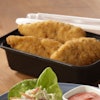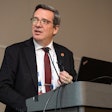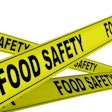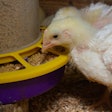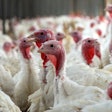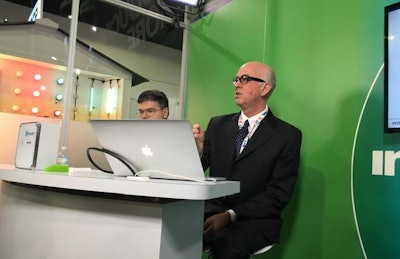
A new startup agri-tech company is working to improve broiler farming using a series of digital sensors to collect real-time data from the poultry house itself.
On Feb. 12, 2019, Dr. Alan Beynon, director of St. David’s Poultry Team Ltd., spoke about his work on PrognostiX, a hardware and software system which uses a series of sensors to monitor environmental conditions inside the poultry house. Beynon appeared as part of Merck Animal Health’s interactive forum on Innovation in Poultry Production and Health, which took place as part of the International Production & Processing Expo (IPPE) in Atlanta.
How it works
Beynon, one of the leaders of the independent poultry veterinary practice serving the United Kingdom and Ireland, said the technology was born when St. David’s began running into trouble as farmers reduced and removed antibiotics from production. The veterinarians found that better poultry rearing depended upon establishing the proper environmental conditions for air, temperature, water and feed inside the house.
Devices for measuring these conditions were somewhat lacking, so the team began to develop a new system which became the PrognostiX poultry product. The platform uses a network of wireless sensors to gather information from the poultry house. That data is transferred to the cloud. From there, the data can be presented in a clear, diagrammatic form in real time. PrognostiX also developed an analytic platform to investigate trends and correlations in the data.
In a 50,000-bird house, he said, the precision agriculture system is able to produce far more granular data than can be collected in the average set up. By using far more sensors to measure temperature, humidity, carbon dioxide, weight and light levels, far more quality, accurate data is rendered.
Using the data
The key to any data gathering program is to put it to good use. Beynon said the PrognostiX data analytics software helps farmers make predicative decisions based on the data. The platform provides unified information access, makes the data simple and accessible, creates a trusted analytics foundation and supplies insights extracted from structured and unstructured data.
The next frontier for the technology is to start utilizing artificial intelligence to gain new insights and create better decisions. Beynon said the combination of solid data with machine intelligence and the expertise in animal health from veterinarians using the product could yield a solution for remote diagnostics of livestock leading to better health, welfare and performance.
“Instead of me analyzing and predicting,” Beynon said. “We’re going to have alerts telling us, ‘If you carry on with the (carbon dioxide) levels or the temperature and humidity levels you have this is the economic conclusion, and this is where you need to change your behavior now,’ so it’s giving us increased learning.”


